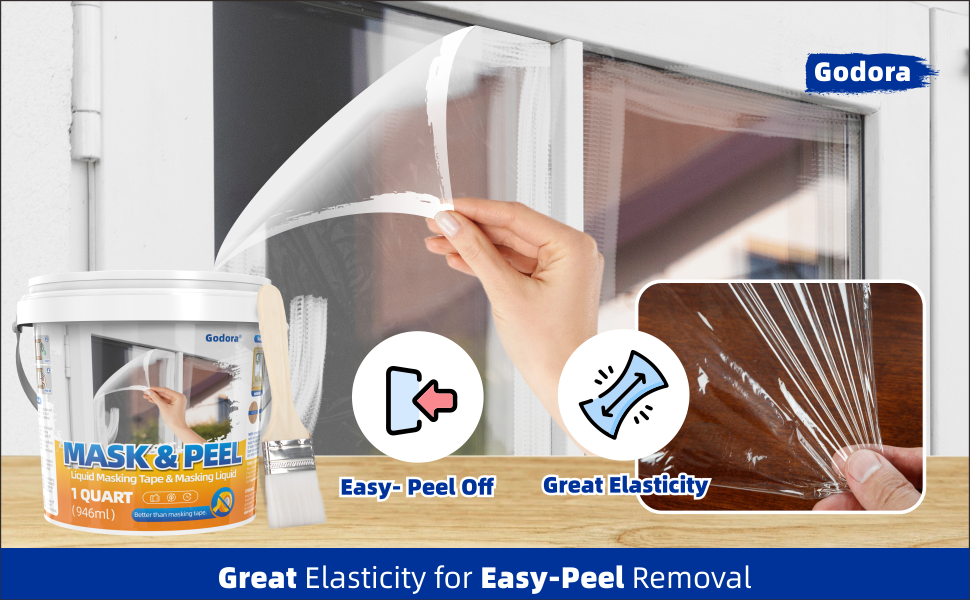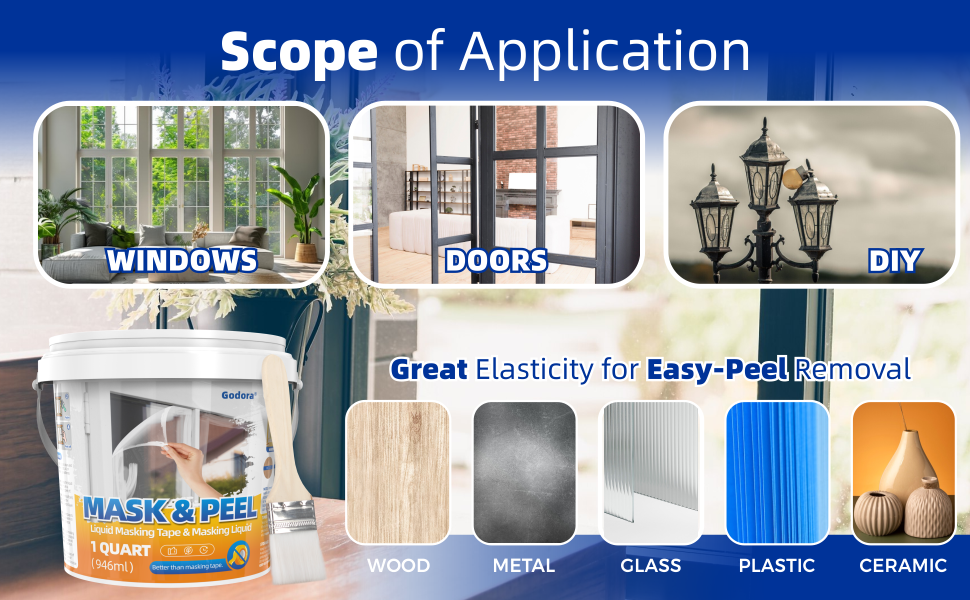Souvela
Godora 1 Quart Liquid Masking for Painting, Masking Liquid for Painting Windows,32oz Peelable Mask Tape, Transparent Mask After Drying, Peel for Paint Windows
Godora 1 Quart Liquid Masking for Painting, Masking Liquid for Painting Windows,32oz Peelable Mask Tape, Transparent Mask After Drying, Peel for Paint Windows
Couldn't load pickup availability
- Liquid Masking for Painting; Crafted from high-quality materials, our masking liquid offers superior performance and reliability compared to masking tapes. Its liquid form provides a seamless application, ensuring precise coverage without the risk of bleeding or seepage.
- Easy to Use; Using the masking liquid for painting windows is straightforward and hassle-free. Clean and dry the glass surface. Apply the liquid masking tape with a brush and let it dry until transparent. Paint your trim or design. Once dry, peel off the masking liquid with the utility knife.
- Ideal for DIY Doors & Windows; Perfect for DIY enthusiasts, this liquid masking tape is specifically designed for projects involving doors and windows with glass panes. Its ease of application and removal, allowing you to paint frames and add details with precision. Whether you're painting window frames or adding decorative touches to glass doors, this liquid masking for painting ensures a flawless finish.
- Wide Range of Applications; Our masking liquid isn’t limited to glass, it works excellently on wood, metal, plastic, and ceramic surfaces as well. This versatility allows you to confidently tackle various DIY projects, from painting furniture to decorating ceramics. Explore your creativity with the assurance of a reliable masking solution.
- Customer Service; We are committed to providing outstanding customer service for you. Our Technical team is here to assist you with any questions or concerns you may have about our Liquid Masking for Painting. Your satisfaction is our priority, and we aim to support you in achieving the best results in all your DIY projects.

Liquid Masking Tape provides precise coverage, ensuring sharp and clean edges without any paint seepage. Additionally, liquid masking tape is simple to remove, leaving no residue behind, which keeps surfaces pristine. It also saves time compared to traditional masking methods, particularly when dealing with irregular shapes or fine details. Moreover, the minimal tool requirement makes it a convenient and efficient choice for achieving professional results in art, crafts, and home improvement tasks.

The high-quality formula of Liquid Masking for Painting offers several outstanding features. Its superior elasticity allows it to stretch and conform to various surfaces, ensuring a tight seal without cracking or breaking. This high elasticity also makes the Masking Liquid incredibly easy to peel off when the job is done, leaving surfaces clean and undamaged.

Masking Liquid for Painting Windows is easy to use. Just apply it to the areas you want to protect, let it dry, and proceed with your project. Once finished, simply peel off the dried masking tape, leaving the surface clean and intact. This straightforward process ensures precise and hassle-free results.
Product Usage Instructions:
- When the product is in a solidified state, slowly add approximately 40% to 50% of boiling water at 100°C.
- During the water addition process, gently stir until the water is fully mixed with the product.
Helpful Tip: To ensure the best results, it is recommended to gradually add the water in batches, stirring gently each time, to avoid adding too much water at once. By following this method, the product will return to its normal state, and the effectiveness will not be affected. Thank you for your understanding and cooperation.

Liquid Masking Tape is versatile and suitable for a wide range of applications. It can be used on various surfaces such as wood, glass, and metal, making it ideal for art projects, home improvement tasks, and detailed crafts. Whether you're painting or DIY, Liquid Masking for Painting ensures clean, sharp lines and easy removal without damaging the underlying surface.
